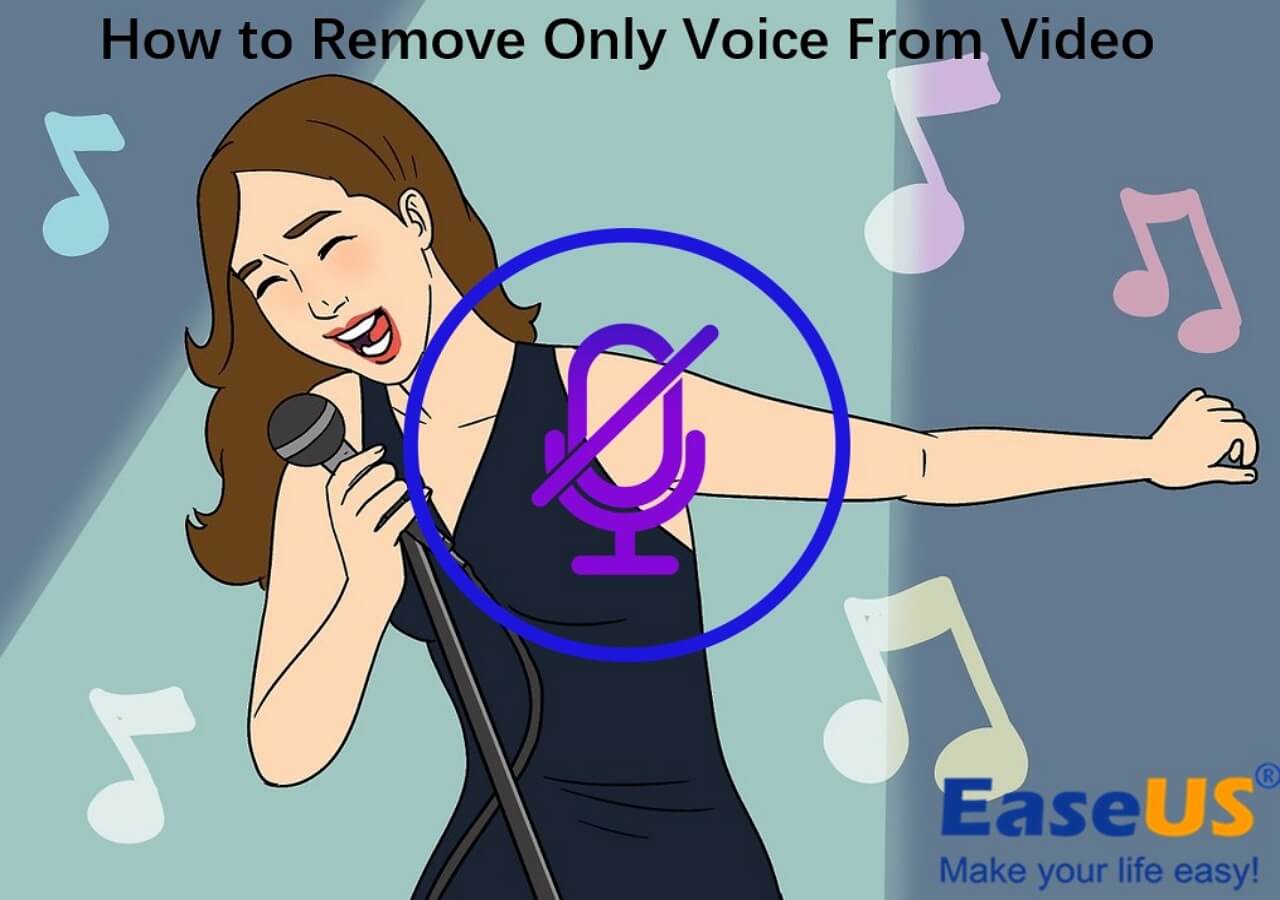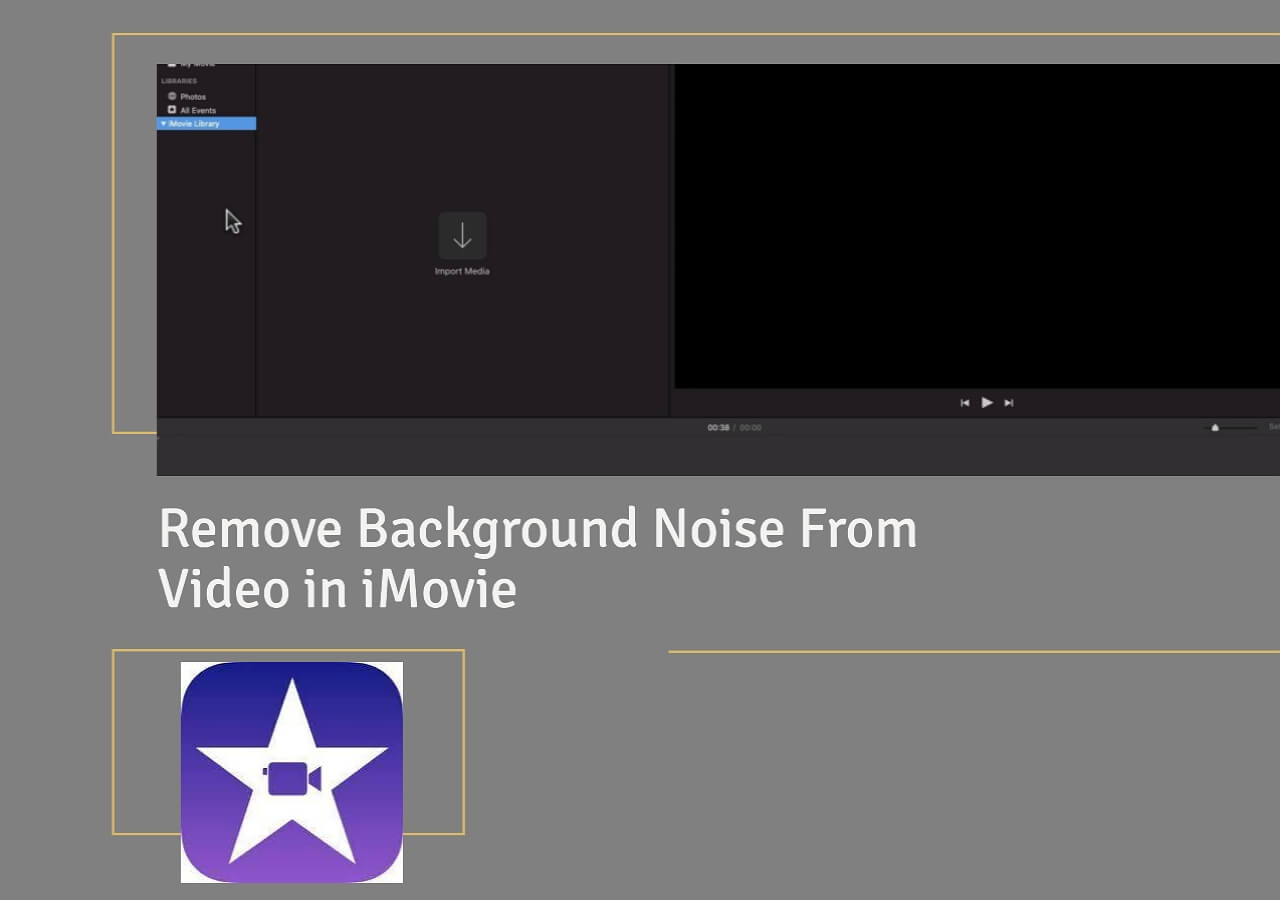-
Jane is an experienced editor for EaseUS focused on tech blog writing. Familiar with all kinds of video editing and screen recording software on the market, she specializes in composing posts about recording and editing videos. All the topics she chooses are aimed at providing more instructive information to users.…Read full bio
-
![]()
Melissa Lee
Melissa Lee is a sophisticated editor for EaseUS in tech blog writing. She is proficient in writing articles related to screen recording, voice changing, and PDF file editing. She also wrote blogs about data recovery, disk partitioning, data backup, etc.…Read full bio -
Jean has been working as a professional website editor for quite a long time. Her articles focus on topics of computer backup, data security tips, data recovery, and disk partitioning. Also, she writes many guides and tutorials on PC hardware & software troubleshooting. She keeps two lovely parrots and likes making vlogs of pets. With experience in video recording and video editing, she starts writing blogs on multimedia topics now.…Read full bio
-
![]()
Gloria
Gloria joined EaseUS in 2022. As a smartphone lover, she stays on top of Android unlocking skills and iOS troubleshooting tips. In addition, she also devotes herself to data recovery and transfer issues.…Read full bio -
![]()
Jerry
"Hi readers, I hope you can read my articles with happiness and enjoy your multimedia world!"…Read full bio -
Larissa has rich experience in writing technical articles and is now a professional editor at EaseUS. She is good at writing articles about multimedia, data recovery, disk cloning, disk partitioning, data backup, and other related knowledge. Her detailed and ultimate guides help users find effective solutions to their problems. She is fond of traveling, reading, and riding in her spare time.…Read full bio
-
![]()
Rel
Rel has always maintained a strong curiosity about the computer field and is committed to the research of the most efficient and practical computer problem solutions.…Read full bio -
![]()
Dawn Tang
Dawn Tang is a seasoned professional with a year-long record of crafting informative Backup & Recovery articles. Currently, she's channeling her expertise into the world of video editing software, embodying adaptability and a passion for mastering new digital domains.…Read full bio -
![]()
Sasha
Sasha is a girl who enjoys researching various electronic products and is dedicated to helping readers solve a wide range of technology-related issues. On EaseUS, she excels at providing readers with concise solutions in audio and video editing.…Read full bio
Content
0 Views |
0 min read
There is no denying that subtitles play a great role in explaining video content to its viewers. But still, some people keep subtitles off even when they are unable to understand it. In turn, they miss out on the necessary points to understand and enjoy the videos.
To keep such viewers at ease and understand the meanings of complex terms, a specific type of subtitle is used, called forced subtitles. This particular subtitle format will let viewers learn about the message shared in a voice even when the subtitles are turned off. Keep reading this guide to learn more about this subtitle format.
What Are Forced Subtitles?
Sometimes, you may have seen a popped-up sentence or phrase on the screen when watching a movie/video. Those captions are called forced subtitles as they are inserted for everyone. It doesn't matter whether you have turned on or off subtitles; you will see them on your screen.
This type of subtitle is mostly used to explain a foreign language, a deep concept of the word/line, or perform related tasks. Mostly, editors add captions to videos recorded in other languages while streaming content on Netflix and Amazon Prime.
Why Use Forced Subtitles?
Forced Subtitles are normally used to explain some words/phrases/lines to people, not from standard-level language. For example, if you are watching a Japanese movie while someone starts speaking Turkish, you will get a subtitle on the screen explaining what the character is saying.
A viewer can't remove forced narrative subtitles even if they have turned them off in the video. It is a type of burned-in-text that must be added to the video. The editors normally add text effects to make them prominent for clear display.
How to Use Forced Subtitles?
The use of Forced Subtitles varies from situation to situation. It can be used in different scenarios according to the video's requirements. Below are some common situations where you must use forced subtitles for the video.
To Translate Boards
Have you ever seen boards written in other languages while watching something on the internet? It happens mostly when you are watching foreign language movies or animated movies. You may not be able to understand what is written on the board.

To clarify to the audience what is written there, forced subtitles are used. It is done to tell the audience what is written on the board even if they haven't turned on the traditional subtitles. The authors of the video particularly add subtitles to MKV or a preferred format to let the viewers know what the board is about.
For Explaining Inaudible Sounds
Sometimes, we may not be able to listen to what the characters are saying in particular situations. For example, if the scene involves a plane crash, it may not be possible for viewers to hear the audio. They may lose the important points necessary to understand the video.

To let the audience understand the scene and audio, forced subtitles are used. Undoubtedly, you can remove background noise to make the scene audible. But it will neither be easier nor be possible for every visitor. So, the author adds forced narrative subtitles to such scenes to make them understandable.
To Elaborate Other Communication Forms
Have you ever watched a silent movie like a cartoon video or a TV show for deaf people? You must have seen the show participants using other communication forms like sign language. It is because they want their audience to learn what they want to say in their videos.

FN subtitles are used to enable other viewers to hear and further clarify the message of the content. You can see captions on the screen for every scene of the video. To edit videos for YouTube or any other platform with such captions, you need to learn some steps. It means you can't add these subtitles as simply as you do with traditional subtitles.
Differences Between Forced Subtitles and Full Subtitles
Undoubtedly, full subtitles (also called traditional subtitles) are used widely in the world. However, forced narrative captions also have prominent usage in different videos. A beginner may not be able to differentiate between them.
So, we have listed a few differences here with a brief description.
| Differentiating Factors | FN Subtitles | Full Subtitles |
| Reason of display | To explain something that is not in the native language of the video | Use to display everything that is spoken in the video |
| Duration | Pop up for a specific time in the video | Keep on displaying throughout the video |
| Editing method | Hard to edit without an advanced tool | Users can edit the SRT file to edit the content of the whole full subtitles file |
| Way of enabling | No need to turn on/off | Require viewers to turn on/off according to their demand |
Download Forced Subtitles
Undoubtedly, you can download subtitles from the internet for a movie in a few steps. But downloading forced subtitles isn't easy unless you have the right tool.
If you want a reliable tool to download and edit these subtitles, you should pick EaseUS VideoKit. It is an all-in-one package for editing videos from different perspectives. You can also use its online subtitle generator to get captions for specific parts of the videos.
- It has an AI-based extractor to recognize the character speaking and extract words to make a full subtitle file.
- It offers subtitle/caption customization to change the font, color, background, opacity, and more.
- You can easily check whether your changes are accurate using its built-in media player.
- You can perform many other tasks related to video editing in addition to subtitle editing or creation.
By reading these features, you must have understood why it is considered the best auto subtitle generator. You can download this tool and enjoy its free trial on your device.
Conclusion
This guide must have cleared your doubts about forced subtitles. We have written this guide comprehensively to make it understandable for everyone. If you are struggling with adding these subtitles, we recommend you choose EaseUS VideoKit.
This toolkit lets you quickly add these subtitles to your videos without issues. It will be pretty simple for a professional to perform other video editing-related tasks. If you have found this article helpful, share it on social media for the benefit of others.
FAQs on Forced Subtitles
It might be possible your queries have been cleared by reading this blog. But if you still have questions, check the following list for quick answers.
1. What is an example of a forced subtitle?
The simplest example of a forced subtitle is when you are watching Japanese movies, you could get a text line explaining what's written on the board.
2. What are forced subtitles on Netflix?
While watching movies or shows on Netflix, you may have seen English words on the screen when characters speak another language. Those subtitles are called forced narrative subtitles.
3. What is the difference between SDH and Forced Subtitles?
SDH is a specific type of subtitle that is shown when the content played on the TV is muted. On the other side, forced subtitles are used only to represent the important information on the screen from the entire video.
4. What are forced-only subtitles in HandBrake?
It is a subtitle track written in the same language in which the movie/video has been launched. In some cases, it may conflict with the original subtitle file and show an overlapping text in HandBrake.




